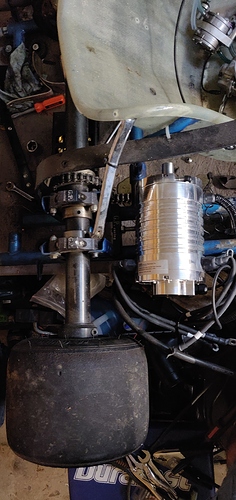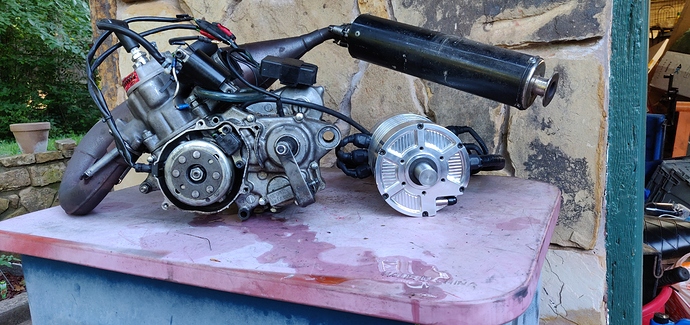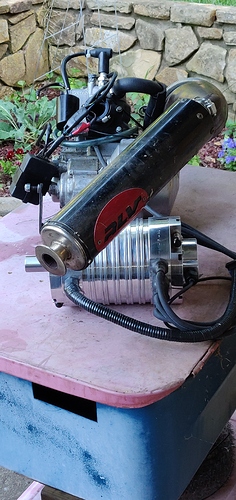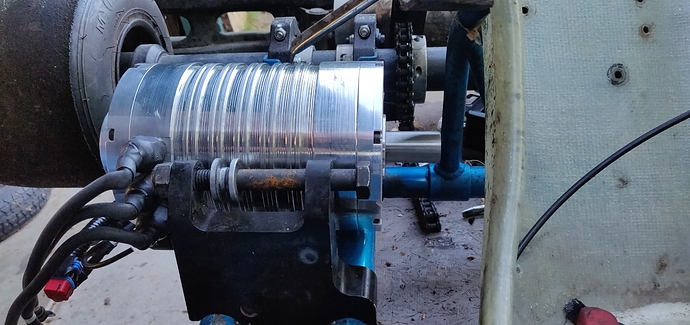This will be somewhat of a rambling thread as I work out the details of my first EV Kart build. Please bear with me if I’m not clear or may wander down some rabbit holes as I think/type out loud. LOL. Yes this is less about racing, and more about engineering. I just happen to be an engineer (by degree in telecommunications) that has always liked speed. Competition isn’t that big of a deal to me. I mainly want the adrenaline rush, and building something yourself is always a fun challenge.
In the fall of '18 I was inspired by what Kolme Faasiline had created. Unlike most of the YouTube electric karts out there that have crazy huge battery packs to burn up tires or just go quick in straight lines, his was serious and designed for sprint racing. If you don’t follow his channel and are interested in electric karts you really should:
At that time I had just completed my first year in karting with a “starter” 80cc shifter running in the shifter kart class at the local track (with mostly 125’s). I of course was never as fast, but showed up most weekends and raced at all but a couple where I had issues (carb setup on a really cold day and a faulty coil). Never having experience with small engines (other than lawn equipment) left me frustrated at times with my pit crew of one (me). With perseverance (and some competitors being no shows or at other races) in the end I managed to somehow finish in 2nd overall for the season. While it was fun, the tight parts of the track I found less so than the sweepers and planned to go 125 for 2019 and just run road course tracks. I bought front brakes for that and put them on, but stuff happened early in 2019 that took my play money away, so no racing last year.
But you can always plan right? That costs nothing but time. So could I build an EKart for road races with 125cc speed? Much research and spreadsheet equations later… Short answer - with current battery technology - you cannot. To make the 30 kw / 40.5 HP of power for 32 minutes with the most efficient controller and motor I could find I would need 1,904 cells for an 18.1 kwh pack. Those 18650 cells by themselves weigh about 95 kg. Add to that the battery case, controller, BMS, cables, motor, etc and the weight is crazy. Not to mention the space required for all those batteries. So until battery technology improves energy density greatly, that is a non starter.
Fast forward to this year. With too much time on my hands (TMTOMH) I went back to looking at sprint races and why I disliked them. It was really those miserable slow corners with a shifter kart engine that was rarely in the right rpm. Well, that’s certainly something that is not an issue with an electric motor. Maybe I should give sprint another shot…
I considered which class I should aim for (of course as a non-scoring provisional). Adult TAG class looks reasonable. I’d only need to produce 20.9 kw / 28 HP for 8 minutes, a much easier target. Although I have to use much higher C rate cells that lowers the capacity, it’s not that horrible. That will only require about a 392 cell pack with a cell weight of 18.5 kg. OK, actually two packs - one for couple lap qualy and the heat race. A second for the longer main. A third would be nice for practice so I don’t have to recharge in-between. With all the other required hardware it should now not be only somewhat heavier than a normal TAG setup so given more torque and no clutch slip loss, it should be about equal.
To be continued… have to run a honey do now.






